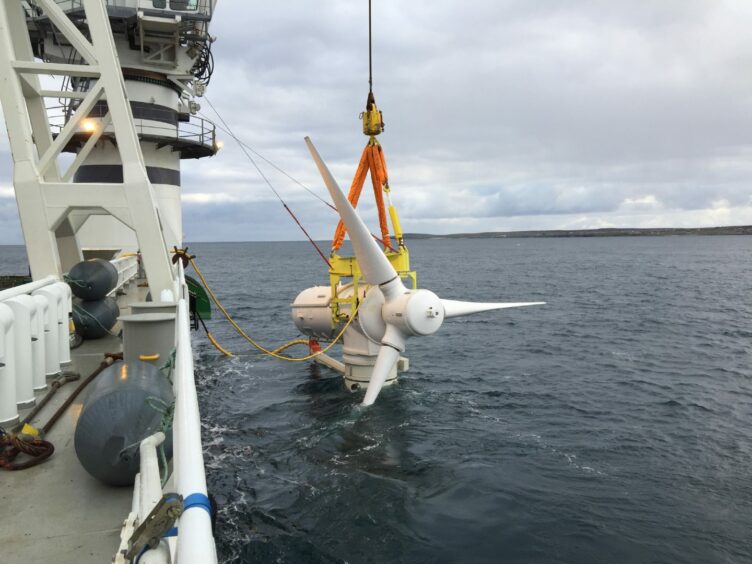
The British Hydropower Association (BHA) has called for more clarity from Labour about the party’s pre-election manifesto – which mentions tidal energy will be “aggressively explored” and “unleashed” across the UK.
The association said it wants Labour to commit to developing a roadmap for the development of tidal range within the country.
BHA CEO Kate Gilmartin noted that the development of tidal range was a significant opportunity for the UK’s energy sector, with the potential to produce up to 20GW of energy.
“These intergenerational assets will give us 120+ years of timetabled energy generation and could form the long-term cornerstone of a decarbonised grid, fit for the future,” she said.
“UK PLC can’t afford not to use our natural resources to maximise energy generation and meet the energy trilemma requirements of energy security, energy sustainability and energy affordability.”
Cuts to green investment
Labour’s manifesto says that the UK will achieve its “clean power mission” with the combined efforts of British workers and businesses – as well as entrepreneurs.
However, a significant U-turn put into action by Labour in February has cut funding for the Green Prosperity Plan, an initiative that would see the government spending £28bn a year on green energy projects, funded by borrowing, to less than £15bn a year – a move that has exacerbated concerns about the government’s commitment to change, and one that is likely to affect any new renewable projects in development.
CEO of Energy UK Emma Pinchbeck swiftly responded to Labour’s briefing in a press release that month, remarking that any “perceived rollback of ambition for clean technologies and investment into the energy transition” was “concerning”.
Pinchbeck highlighted that the transition was the future of the UK’s energy sector and said that most investments needed for Net Zero would come from private businesses.
She continued: “To make such commitments here in the UK when returns come over years and decades, business needs to know that politicians won’t pull the rug from under them.”
Notably, Pinchbeck expressed that the figure itself was not the main issue, but rather the signal the decision sent to potential investors, with the energy industry searching for certainty from the government.
“We are facing competition from other markets for investment into things like clean technologies, renewables and grid infrastructure – particularly following the gas crisis – so our industry is looking for certainty and unfortunately, that’s the opposite of what they’ve been getting over the last few months from Westminster,” she said.
According to the statement, the key to retaining the confidence of the UK market is to ensure such U-turns are not repeated, as they make investing in the country an unpredictable venture.
Previous tidal pledges
Under the Conservatives the UK pledged to put forward £20mn per year into tidal stream projects in 2021 as part of the Contracts for Difference (CfD) scheme’s Allocation Round 4 (AR4), which ended up with a total budget of £210mn in 2022; down from the proposed £285mn the previous year.
In 2021, then Energy Minister Greg Hands said regarding the announcement that “dedicated backing for tidal stream power is opening up a new chapter for Britain’s coastal communities and advancing the possibilities for Britain’s marine energy sector to play a significant role in delivering the UK’s green industrial revolution”.
Following the recent conclusion of AR6, Labour’s manifesto currently states that the party aims to approve the next round of licencing projects (AR7) while including a yearly “British Jobs Bonus” of £500mn, which would see increased investment in coastal communities and industrial centres.
Although not explicitly mentioned, this would presumably include a new budget for tidal energy projects.
Currently, the UK has four operational tidal energy sources able to produce 10.5MW, according to the Department of Business, Energy and Industrial Strategy’s Renewable Energy Planning Database.
An additional 14 schemes are expected to begin construction at some point soon, however, all are still in various stages of planning.
These projects are set to produce less than 100MW each but – once completed – total energy generated from tidal sources is expected to rise to 1.07GW.
This final estimate remains in doubt however, with the 320MW Swansea Bay tidal lagoon having lost its planning permission in 2020.
Unachievable goals?
Labour has continued to confirm its intention to work towards a decarbonised electricity grid while providing £7.3bn on low-carbon industries. The manifesto notes that the UK will be the “first major country in the world to run on 100% clean and cheap power” by 2030.
Despite this, worries about the achievability of these promises persist, with former head of the Climate Change Committee (CCC) John Gummer saying he was “yet to see the evidence” that the target was reachable.
Similarly, industry executives and green policy experts have also cast doubts on the policy’s feasibility due to a lacklustre energy grid and outdated planning laws – as well as a lack of functioning renewable energy sources.
To make progress towards these targets, tidal energy will need to play an important part in the country’s decarbonisation process, with former Labour MP for Birkenhead Mick Whitley noting in January this year that the UK was “uniquely positioned to harness the power of its tides. 10% of the world’s tidal resources, and half of Europe’s, are found in the UK”.
Despite this, Whitley highlighted that investment and support for tidal range projects had been minimal so far.
According to the MP, “tidal range technology was excluded entirely from the Energy Act 2023, and the one reference made to tidal power in the 2022 energy security strategy – a commitment to ‘aggressively explore’ the possibilities of tidal power – has not been delivered on”.
Whitley added that improvements such as adding tidal energy into national policy statements could be made – something Labour has seemingly considered with its manifesto, despite a large absence of details on how to carry out the plans.
According to another former CCC chief executive and ex-chief climate adviser for the UK Government Chris Stark however, the details encompassing the 2030 target could be defined “more accurately” by the party soon.
Untapped power and reaching Net Zero
Minimal progress towards growing the UK’s renewable energy sector in general has meant that without significant additional action, neither pledge involving renewables by the Conservatives or Labour would allow the country to achieve its international climate goals, according to deputy director at Environment and Society Centre Antony Froggatt – which points to a noticeable lack of foresight by both the current and previous government when looking at the potential of tidal energy.
“To meet its international commitments, the UK must avoid falling further behind the US with its Inflation Reduction Act and the EU, with its Green Deal Industrial Plan,” Froggatt noted, adding that the country also needed to increase its cooperation with the EU to improve its ability to “deliver on key infrastructure”.
Construction of new renewable energy projects in general will also require the installation of five times more new transmission lines than have been constructed in the last 30 years, according to the National Grid.
Previous reasons given by the UK government for shying away from investments in power from tidal range projects is supposedly cost.
Upon being asked on why support for Swansea Bay had been removed in 2018, Business Secretary Greg Clark told Westminster that “the cost that would be incurred by consumers and taxpayers would be so much higher than alternative sources of low-carbon power that it would be irresponsible to enter into a contract with the provider”.
According to research by independent research and technology organisation Energy Systems Catapult however, the costs for tidal drop rapidly in the near term if supported effectively, with research showing that tidal installations winning out in the long term due to their longevity and associated reduction in cost.
Recommended for you

 © Energy UK
© Energy UK © SYSTEM
© SYSTEM © Supplied by UK Parliament
© Supplied by UK Parliament